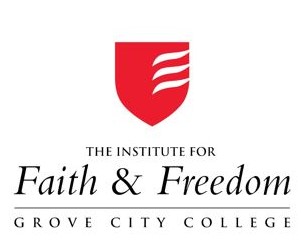Minorities Need Affirmative Action? That’s Racist – and Wrong

The liberal insistence that minorities can’t succeed without affirmative action isn’t just racist; it’s demonstrably wrong.
In the wake of the recent Supreme Court decision affirming a state’s right to ban race-based preferences in college admissions, many leftist commentators suggest that the participation in higher education by students of color could suddenly plummet. If other states followed the examples of Michigan, California, Washington, Florida, Arizona, New Hampshire, Nebraska and Oklahoma, and prohibited different admissions standards based on ethnicity alone, leading Democrats worry leading public universities would once again revert to the bad-old-days when white students dominated the campuses in wildly disproportionate numbers. In other words, they assume that disadvantaged minorities, particularly Latinos and blacks, are so profoundly handicapped by history that they can’t possibly compete on a level playing field.
The best evidence to counter this insulting assumption comes from California, the state that first blocked race preferences. There, in the absence of affirmative action, the percentage of white students in the University of California system dramatically declined; Asian candidates proved to be the chief beneficiaries of banning race-preferences, and they are now over-represented at UC campuses by more than 300 percent.
Golden State voters overwhelmingly approved Proposition 209 in 1996, and after 17 years without affirmative action white-Anglo students have dwindled to a meager 23 percent of the incoming freshmen at the prestigious University of California system. In other words, 73 percent of the newly admitted students at the nation’s leading state university system count as “students of color” (black, Latino, Asian and Native American) according to the standard liberal classification.
White students are, in fact, now under-represented: they comprise 29.2 percent of all Californians between the ages of 15 to 19, but only 26.8 percent of those admitted to one of the Cal campuses. By comparison, Asians comprise 36.2 percent of the incoming students, and Hispanics, for the first time outnumber whites, representing 28.8 percent. Blacks are only 4.2 percent of the admitted students, but that figure isn’t so radically out of line with their 6 percent of the 15-to-19 year olds in the California population.
National figures demonstrate similar progress for all ethnic minorities (yes, so-called “white people” still represent a substantial majority in the United States, despite media distortions to the contrary). Those numbers prove that blacks, Latinos and Asians can certainly compete for university admissions with or without the assistance of affirmative action. Data from the National Center for Education Statistics (a division of the federal Department of Education) show a steady rise in college enrollment within all ethnic communities, and most strikingly among young Latinos. Amazingly, Hispanics nationwide have replicated their feat in the state of California: topping white Anglos when it comes to sending the next generation to colleges and universities. In 2012, a stunning 68.5 percent of Latino high school graduates went on to higher education, compared to 67 percent of whites. Though blacks lagged somewhat behind with 62 percent of high school graduates enrolling in college, their progress has been most dramatic of all groups, with a sustained rise from below 40 percent in 1982.
Defenders of affirmative action will insist that this heartening progress shows the importance of race-based preferences and the dangers of ending them. But even if you use recent numbers to argue that affirmative action has been helpful in the past you can hardly deploy that data to argue that it’s still necessary today. For one thing, the biggest experiment with suspending race preferences – in California for the last 17 years – shows some of the biggest gains for Latino students. Now, despite challenges with language and immigration status, and with an overall economic status sharply below that of whites, Hispanic families across the country are more likely to see their high school graduates enroll in college than their white neighbors.
There is no point in arguing whether affirmative action played a useful historical role in encouraging minority participation in higher education, or whether it actually damaged minority interests by sending young Latinos and African-Americans to more demanding and selective institutions for which they weren’t actually qualified, encouraging higher drop-out rates for disadvantaged minorities. (That argument is persuasively documented in the important 2012 book by Richard Sander and Stuart Taylor, Mismatch: How Affirmative Action Hurts Students It’s Intended to Help, and Why Universities Won’t Admit It.) The crucial question faced today by educational policy makers isn’t whether affirmative action was ever necessary, it’s whether it’s still necessary today.
In the 2003 affirmative action case Grutter v. Bollinger, Justice Sandra Day O’Connor wrote for a sharply divided Court in a 5 to 4 decision that the Constitution does not prohibit “narrowly tailored use of race in admissions decisions to further a compelling interest in obtaining the educational benefits that flow from a diverse student body.” But she added that “race-conscious admissions policies must be limited in time…The Court expects that 25 years from now, the use of racial preferences will no longer be necessary to further the interest approved today.”
Statistics show that contrary to Justice O’Conner’s well-advertised expectation, the nation need not wait another 12 years to see that affirmative action is no longer needed. Current numbers demonstrate that in 2014, race-based preferences are already unnecessary – and profoundly unjust.
This column originally appeared at TruthRevolt.org on April 28, 2014.




















